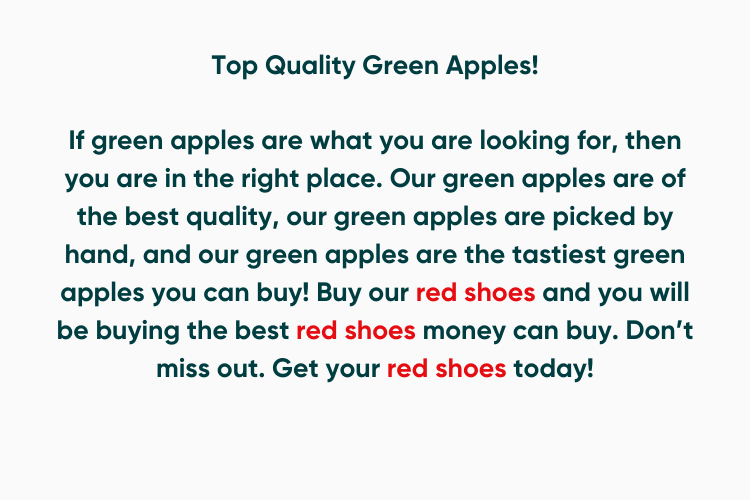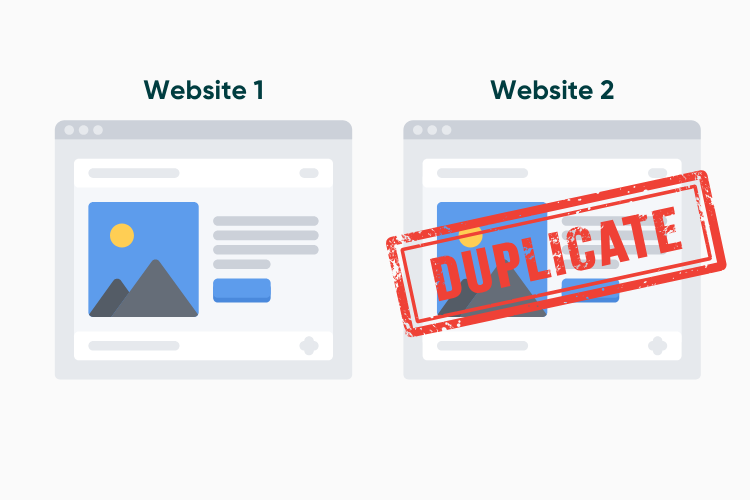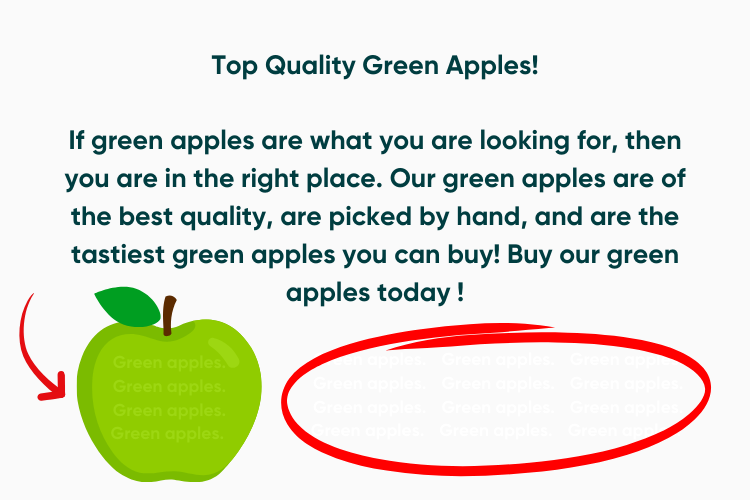Our Links Are Trusted By 2,500+ SEO Agencies
Our Links Are Trusted By 2,500+ SEO Agencies
By the Rhino Rank team
30th Oct 2023

It’s easy to be enticed by the promise of quick fixes in search engine optimization (SEO). But using black hat link building tactics to boost your rankings is a slippery slope and can result in heavy penalties from search engines. Therefore, it’s essential to understand which practices are considered black hat and how to avoid them.
In this guide, we will discuss why it is unwise and even dangerous to partake in black hat link building. Plus, we will also show you how to check if you have black hat links, how to remove them, and how to create higher quality links to your website that are both safe and dependable.
Black Hat SEO is a term that describes devious website owners and marketers who use unethical practices to manipulate search engine algorithms and improve their website’s rankings. People who employ black hat link building practices are attempting to bypass the natural process of obtaining backlinks, contrary to white hat SEO rules which prioritize user experience and content quality.
Search engines such as Google use algorithms to deliver relevant content to users based on their search queries. Therefore, these search engine algorithms must be able to distinguish between a high-quality site and a site that uses black hat SEO techniques, like link farms, keyword stuffing, spammy paid links, and excessive reciprocal linking.
If black hat SEO techniques are detected by search engines, this could have a negative impact on a website’s visibility and performance. A Google penalty normally leads to a significant drop in your rankings or worse, your website could be de-indexed and removed from the search pages altogether. It’s therefore essential that people avoid Black Hat SEO techniques.
For example, back in 2011, JCPenney, a popular department store chain, was caught for buying a large number of links. The company was heavily penalized and was banned from Google’s index for 90 days! This caused them to lose a full fiscal quarter’s worth of profit due to the lack of organic search traffic.
It’s therefore essential that people avoid Black Hat SEO tactics if they want to long-term, sustaining success.
As we have just discussed, using black hat link building tactics to climb to the top of Google can result in a hefty penalty. With this in mind, let’s look at the most common black hat SEO techniques and how to avoid them!
Common black hat link building techniques include:
Private Blog Networks (PBNs) are a collection of blogs created to generate multiple links to a site. They were originally designed to build a site’s domain authority (DA) and boost each site’s rankings. However, PBNs violate Google’s Webmaster Quality Guidelines, so using them to manipulate your search engine results and rankings can cause a hefty penalty.
As the name suggests, a link farm is a collection of websites that link to each other, manipulating their individual link profiles by increasing the number of inbound links each site has. Google sees link farming as an unnatural and spammy way of obtaining links and will penalize any site that follows this practice.

Keyword stuffing involves filling a page with the keyword or phrase you want to rank for, making the text appear unnatural or even unreadable. While keywords help search engines understand what your content should be ranking for, overusing keywords can have a negative effect and means you can be penalized by Panda Google Algorithm for low-quality content.

Attempting to boost your website traffic by filling your site with unnecessary and irrelevant keywords won’t work, as Google’s algorithms prioritize helpful and relevant content to the user’s original search query. In addition, you may find that by using this technique you are inadvertently annoying your existing customers, which may cause them to go to one of your competitors instead.

Duplicated or copied content is a common black hat technique that involves stealing or automatically generating content that appears on more than one site. In these circumstances, Google will usually just show the original content in its SERPs, so not only is this technique a waste of time, but it can also cause your other page rankings to drop considerably.

Hidden text is usually text that is the same color as the background, text that is positioned off-screen, text that is hidden behind an image or text with a font size of 0. This black hat SEO tactic is often used in partnership with other techniques, like keyword stuffing. If you’re hiding keyword in order to boost and manipulate search rankings, then it’s likely to have the opposite effect and your site could disappear from the result pages altogether. The same principles also apply to hidden links, which are links that are intentionally “hidden” from website users.
Clickbait is content or imagery that has been designed to attract users’ attention and encourage them to click on a specific link to generate web traffic. Used incorrectly, this can be a very manipulative technique, which is why Google, and even some social media platforms like Facebook, are cracking down on clickbait and fake news in order to improve and promote better user experience.
Cloaking is a dishonest way of manipulating and using two pieces of content – the first piece is written in order for the website to rank high with search engines, whereas the second piece of content is written to actually benefit website users and potential customers. This cloaking method violates Google Guidelines, as those using it are aiming to fool and manipulate the search engine’s algorithm.
As the name suggests, negative SEO does the opposite of what you would want it to do – it is designed to cut traffic and reduce the visibility of a website. This black hat technique is something people would use on their competitors in order to discredit them and boost their own visibility and authority in the industry. However, if you get caught falsely accusing, criticizing, or reporting a competitor, prepare yourself for a heavy penalty.
Google states that if you are selling or buying links then you’re going against their guidelines.
However, if you are set on buying backlinks, there is a way to do it safely. Firstly, ensure that the link building agency you use is trustworthy and uses a 100% genuine and manual outreach process, as this will influence how well your website performs on Google.
At Rhino Rank, our curated links are designed to always look genuine and natural. Each link is placed by real webmasters and site owners on trusted, high-authority sites – which is exactly what Google says should be happening.
Search engines are cracking down on black hat SEO practices in order to promote legitimate link building. Link farming or the use of private blog networks (PBNs) fall into this category. If caught, websites following these practices can face penalties from search engines that range from a drop in rankings all the way up to being removed completely from the search results. On top of losing online reputation through poor ranking performance, website owners who use black hat tactics also run the risk of users lacking trust in their brand when they become aware that unethical methods have been used.
Search engines use algorithms and machine learning to spot unnatural link patterns that demonstrate manipulative tactics – which is how they are able to penalize people who use black hat link building tactics.
For example, Google’s Penguin algorithm was first released in April 2012 to target spam links, penalize websites that engaged in spammy and manipulative link-building practices, and instead promote legitimate and high-quality links and content.
Staying clear of any kind of malicious practices related to black hat SEO, and instead building backlinks that are relevant, genuine and natural will give your site the best chance of reaching and staying at the top of the search rankings. Without a doubt, white hat SEO strategies are the way to go.
On top of losing your online reputation due to poor ranking performance, websites that employ black hat tactics may find that customers begin to lack trust in the brand when they become aware that such unethical methods have been used. For example, in 2014, Expedia saw their organic search traffic drop by 4.3% due to using black hat SEO techniques.
To avoid any risks associated with black hat links or PBNs, it is much better for web owners to focus on creating meaningful, high quality content while following the guidelines set by search engines, like Google or Bing. Concentrating on ethical link strategies will form the strong foundations necessary for building long term success, instead of relying on the shady tactics listed above which could permanently damage your site’s overall credibility.
To protect a website from black hat link building, it is essential for the website to identify and remove any spammy or bad quality links. By assessing a website’s backlink profile, you can quickly spot signs like poor quality or malicious links or links that use irrelevant anchor text.
Therefore, reviewing a domain’s overall connection portfolio carefully should be done frequently. It enables webmasters to detect undesirable link patterns quickly and take corrective action where appropriate, meaning they can protect their sites against potential penalties.
Below we will explore how examining backlinks thoroughly could help determine if you are getting black hat backlinks to your site.
Website owners can ensure that their site abides by search engine guidelines and avoid potential penalties by auditing their backlink profiles for any suspicious patterns. Red flags to look out for include lots of poor-quality or unrelated links, overuse of anchor text optimization or links from known spammy websites.
Google Search Console, Moz Link Explorer, Ahrefs Backlink Checker, and SEMrush’s set of backlink tools are all useful in analyzing a website’s link profile to pinpoint black hat connections.
By spotting black hat SEO links early on and addressing them accordingly, you will be able to proactively protect the performance results of your website whilst simultaneously carrying out trustworthy, white hat link building techniques.
Signs which could indicate that black hat link building is occurring can include:
Detecting and proactively dealing with these red flag links will enable you to defend your current search engine rankings while maintaining your site’s credibility and trustworthiness. Link building tactics should always remain ethical. This is why it’s important to look out for evidence of unethical link building.
To protect a website’s backlinks profiles from danger, preserve their search engine rankings, and prevent penalties – it is essential that individuals remove and disavow these links. This requires getting into contact with the linking site’s owner and asking them to remove the link, as well as filing a disavow file on search engines.
For any website owner looking to improve their backlink profile, the removal of black hat links is a critical element of this process. Therefore, when reaching out to a site owner to request a link be removed, it’s important to be polite and transparent – make it clear that this type of link may damage the reputation and rankings of your site, which is why you are asking for it to be deleted.
If help is needed to remove the link, make sure you provide the site owner with clear step-by-step instructions for them to follow. It is important to maintain professional courtesy throughout your communications so as not to upset or anger the site owner, as you ultimately need their help to ensure you don’t suffer from a negative SEO impact.
Website owners can submit a disavow file to search engines, such as Google Search Console, to protect their site from any potential harm caused by black hat links. The list of URLs and domains within this text document requests that the search engine not to take these links into consideration when calculating its PageRank for the website.
Creating and submitting a disavow file is an important way for webmasters to indicate that they do not endorse or support any suspicious links pointing toward their website. It is also an effective way for them to demonstrate their compliance with the different search engine algorithms.
Rather than engaging in black hat link building tactics, website owners should instead concentrate on constructing quality links that meet the search engine guidelines. Building ethical backlinks requires creating content with value, establishing genuine connections, and writing guest blog articles for other quality websites.
Creating these types of valid hyperlinks allows site owners to promote their web pages as reliable sources of expert information, generate natural external links through organic referrals, and enhance their search engine rankings at the same time.
Producing content of a high quality, which then draws in additional organic links, is key for any ethical link building campaign. This content should be helpful and engaging to the reader – either by teaching them something new, offering them a solution to a common problem, or simply entertaining them. Creating this content on a regular basis will help website owners amass strong natural backlinks without resorting to black hat tactics that go against search engine guidelines.
For successful link building campaigns, creating quality content must take priority over keyword usage – with user experience always being the key influence.
It is essential for website owners to engage in ethical link building by forming connections with influencers and industry leaders. Developing these relationships can bring many advantages, such as developing a higher level of visibility online, cultivating authentic backlinks from reliable sources, and gaining more credibility within the sector.
For this reason, it’s important to take proactive steps to meet like-minded individuals. This can be done by researching relevant influencers in your industry, consistently interacting with their work online, and even reaching out directly to them and asking if they’d be interested in being involved or partnering up on a content project together.
If approached correctly networking has immense potential, helping both parties increase rankings while increasing trustworthiness through collaboration!
Website owners can improve their website’s long-term success and search engine rankings by constructing high quality, ethical links through the practice of guest blogging and guest post outreach.
There are several ways to find guest post opportunities, the main ones being:
You may be thinking that if you’re careful then you’ll be able to get away with doing one or two black hat SEO tactics. However, eventually, search engines will spot what you’re doing, and you will see your keyword ranking and website traffic plummet, suffer damage to your reputation, and lose credibility with your website users and existing clients.
Therefore, to ensure sustained success, website owners must stay away from black hat tactics and adhere to search engine guidelines. Link building practices like creating quality content, networking/relationship-building, and quality guest post blogging are all ethical approaches that can help improve rankings within the SERPs (search engine results pages).
The gains achieved by adopting a “quick fix” mentality with black hat link building do not outweigh any potential risks.
Black hat links aim to manipulate search engine rankings in an unethical way to get higher than normal organic results from the algorithm. This tactic is employed with the intention of exploiting search engine loopholes to influence and control what appears on a given search engine’s results page.
Gray hat link building involves tactics that are not forbidden by Google, but they are morally ambiguous. These techniques fall somewhere between white hat SEO and black hat SEO, often pushing the boundaries and leveraging loopholes to improve a website’s search engine rankings.
Link building via black hat techniques means using tactics such as keyword stuffing, link farms, cloaking and clickbait to try to rank higher in search engine results. Attempts at manipulating algorithms used by these search engines are prohibited since they go against best practices established for online use.
White hat SEO abides by Google’s rules to promote relevant, high quality content and to better the user experience, whereas black hat tactics and backlinks that disregard such standards, aim to manipulate the search results and have no regard for user experience.
Black hat link builders can suffer penalties from search engines – with your website seeing a dramatic drop in rankings and traffic, or even being completely removed and de-indexed by Google! Black hat link building also lowers trust with website users and can affect sales numbers in the long run.

Join 18,000+ Businesses Growing with Rhino Rank
Sign Up